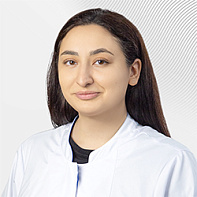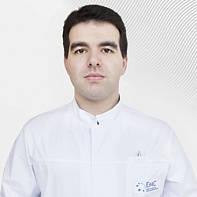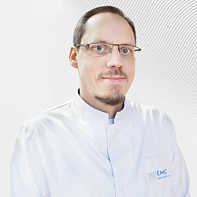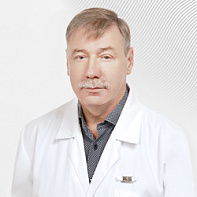About the operation
Knee arthroscopy is a modern effective method of diagnosis and treatment of knee diseases.
The procedure has been designated the "gold standard" in orthopedic practice due to its effectiveness, low injury rate and accelerated rehabilitation time compared to traditional open-type surgeries.
Preparation for the operation and carrying out
Preoperative examination
Closed-type surgical intervention arthroscopy is performed using a special device, an arthroscope. It's a thin tube with a video camera and a lighting device at the end. Its use allows you to take into account all the anatomical details of the joint without having to make large incisions. Knee arthroscopy is used both for diagnostic purposes and for the treatment of various diseases such as ligament tears, meniscus injuries and inflammatory processes.
- Chronic knee pain;
- Meniscus or ligament injuries;
- Arthritis and other inflammatory diseases of joints;
- The presence of free intraarticular bodies;
- Conditions requiring clarification of the diagnosis (indication for diagnostic arthroscopy of the knee joint);
- Common severe diseases (for example, cardiovascular insufficiency, diabetes, blood diseases, etc.);
- Infectious processes in the joint;
- The presence of serious pathology of other organs that may complicate the operation.
Operational activities include:
Knee ligament arthroscopy (plastic surgery)
It is a resection of the damaged ligament and its further transplantation. There are the following types of injuries in which a doctor can choose this technique: a simple sprain, a slight tear, and complete separation of the ligament from the bone base. Most often, these problems are accompanied by osteoporosis, impaired protein metabolism, and also old age. Ligaments can be damaged when trying to lift a large weight, a strong impact, an unsuccessful movement of a limb, or a fall.
Chondroplasty
It helps to eliminate the defect of articular cartilage tissue. Using an arthroscope in this technique makes it possible not only to detect, but also to completely remove cartilage fragments from the joint bag, which are often the main sources of pain.
Meniscus removal (meniscectomy)
It is a partial or complete removal of the meniscus during its restoration or implant transplantation. Currently, complete meniscectomy is practically not used, because it is believed that such an approach can provoke the development of osteoarthritis. During this operation, as a rule, only the damaged surface is removed. With partial restoration, the edges of the meniscus and the implant are aligned, full fit is achieved, and non-viable tissues are excised. The torn sections of the element are fixed by stitching, or by biodegradable screws.
Diagnostic arthroscopy of the knee joint
It makes it possible to identify various types of pathology, including inflammation, damage or destruction of the meniscus.
Preparation for the operation
Preparation for knee arthroscopy includes several key steps:
-
consultation with a trauma surgeon: the doctor conducts an examination and analyzes the patient's medical history. It is important to inform the doctor about all medications and allergy symptoms. Two days before the operation, it is recommended to stop taking anticoagulant medications.
-
Clinical studies: it is necessary to take a general and biochemical blood test, tests for HIV, syphilis and hepatitis, clinical urinalysis, MRI or CT scan of the joint for accurate diagnosis.
Preoperative requirements: 8-12 hours before surgery, you should refrain from eating and drinking liquids. Your doctor may also prescribe certain medications.
All these steps will help minimize risks and make the procedure safer.
How is knee arthroscopy performed
Arthroscopic surgery, depending on the degree of damage and the complexity of the case, is performed under local or general anesthesia and takes from 30 minutes to 1.5 hours. The surgeon makes small incisions in the skin, through which he inserts an arthroscope and the necessary instruments. The use of a micro-video camera allows the specialist to see the condition of the joint from the inside, including its damage, including degenerative processes in the initial stage. After carrying out the necessary manipulations, the instruments are removed, the incisions are sutured, and sterile bandages are applied on top of them.
Recovery and rehabilitation after knee arthroscopy
After arthroscopic treatment of the knee joint, rehabilitation and recovery can take from 2 weeks to several months. It is recommended to avoid physical activity for the first 7-10 days and wear a special fixing bandage. The attending physician prescribes a course of physical therapy that will help restore joint mobility and muscle strength. Usually, a month after the intervention, patients can return to normal activities, but it is better to postpone intense physical activity for a longer period.
We have prepared answers to the most popular queries regarding the cost of knee arthroscopy.
At the EMC Center for Traumatology and Orthopedics, you can get complete information on arthroscopic knee treatment and undergo the necessary diagnosis within a few hours. Thanks to the latest generation of innovative equipment and European standards of medical care, you will receive guaranteed results, rapid recovery and a return to a full life in the shortest possible time.
Doctors


















.jpg)

- Specialization - manufacture of individual orthopedic insoles, congenital and acquired deformities of the upper and lower extremities in children
- Performs conservative and surgical treatment of injuries of the musculoskeletal system in children
- Graduated from the Pirogov Russian National Research Medical University, Faculty of Pediatrics




